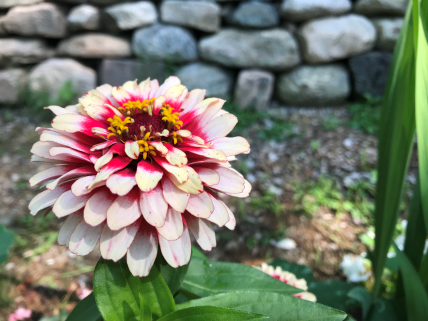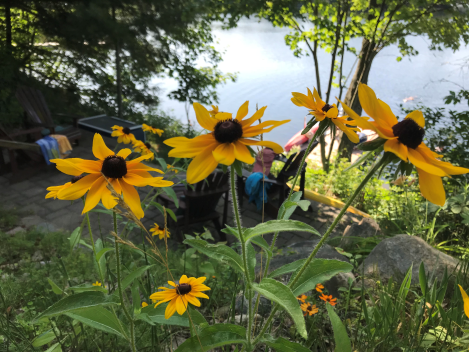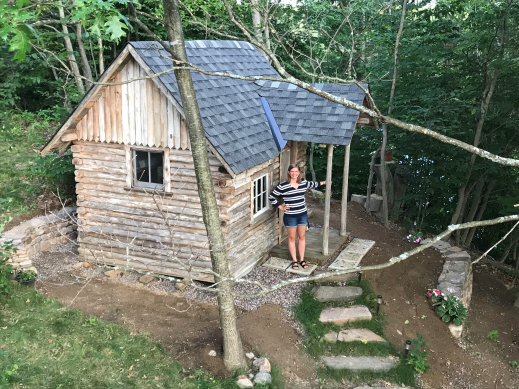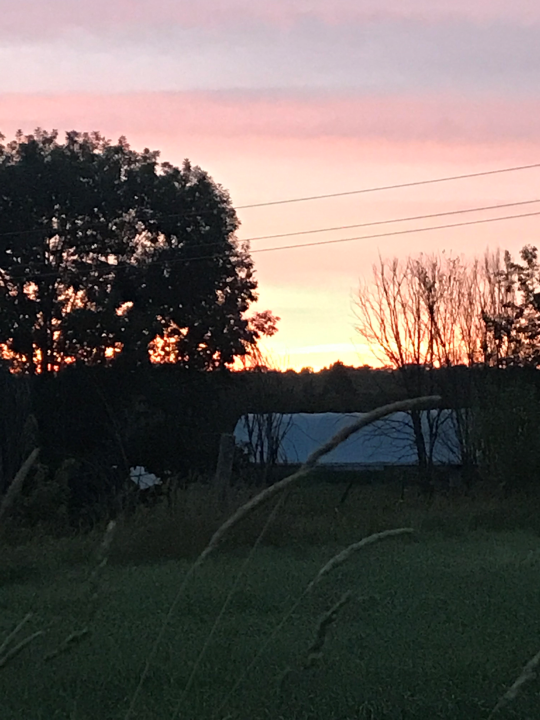After being inspired by the terraced hillside gardens of Cinque Terre, Italy, Nadine and I took a trial-and-error approach to gardening our emerging stone terraces at Minden Lake.
In the sunnier area near the lake, a hydrangea flourished, delivering large white blooms as big as sun hats. Hydrangeas love stone — their roots slither under and around it, seeking the cool soil. The big, healthy hydrangea bush was temporarily subdivided while a new terrace was built around it. The baby hydrangeas resulting from the division were gifted to a few of our neighbors. Part of the original root was replanted and will flourish again in the next year or two.
Along with the gardening miracles came a few disasters. A groundhog burrowing near the lake wreaked havoc on our begonias, for example, nibbling the leaves each time the plants attempted to grow. We ended up with some stunted begonias, and none of the colour we thought they might add to the terraces. Live and learn.
Nadine took a page from her parents’ garden at Horseshoe Lake, and planted gladiola bulbs in spring. Their multi-coloured spikes dressed up our hillside garden in summer. The bulbs — and any new bulbs generated that year — would be taken inside to be stored over winter in a cool spot in the basement, then set out again each spring to bloom again.
Butterfly blooms
Likewise, multi-coloured zinnias, grown from seeds saved from Nadine’s parents’ garden, attracted Monarchs and other butterflies. We learned they would produce even more flowers if the first few blooms were nipped off, stimulating the plant to grow more stems sideways and upwards. Zinnia seeds could be easily saved over winter and replanted. We also experimented with a couple of perennial flowers, including a butterfly bush, purchased and grown from seed from a company called William Dam Seeds near Hamilton.

Nadine’s Mom suggested Nasturtiums, which would cascade in green over the stone while putting out bold orange and red blooms. As a bonus, the blooms were edible, with a fresh but mild flavour, perfect for a quick snack near the lake. Further below on a rough stone amphitheatre near the lake, Nadine was nurturing plants including lilies, creeping thyme, perennial geraniums, phlox and other flowers that had taken to the site and climate of Minden Hills.
Wildflowers such as brown-eyed susans and daisies complemented the mix. Wild milkweed was another big draw for the Monarch butterflies.

A taste of Italy
To tip our hat to the terraced gardens of Italy, we set out a couple of small fig trees in pots. They would be brought inside over winter. Nearby I found some wild grape vines, resembling Ontario’s native concord variety. These were replanted next to the farmer’s fence alongside our lot in the hopes they would grow and produce some sweet fruit.
On the stone terraces, the new plants did well. The terraces held moisture and were partially shaded by some young oak and poplar trees. We continued to enrich the sandy soil with some peat moss, worm castings, and home-grown compost.
While most flowers flourished, we also learned what did not work in the sunny spot. After the groundhog had his way with the begonias, we discovered that colourful impatiens were too tender for this hot spot.
An organic approach
Further up from the lake, at the new terrace fronting the little log cabin, we planned a garden that could accommodate more shade. We decided on a natural approach, letting the new terrace area green up by itself, and adding just a few subtle garden accents. These included hostas, propagated from our home in Toronto, and some small pots of shade-tolerant impatiens. These were planted at each end of the new terrace fronting the cabin. To accessorize, we placed the same plants in pots on the stumps of the old beech tree nearby.

Meanwhile, the forest was declaring itself on and around the site of the cabin. A maple tree that been cut down to squeeze the cabin into its new forest home was shooting out stems again. It looked like it would regrow nicely to the north of the cabin. Similarly, some smaller beech trees that were taken down next to the cabin site were starting to bud out from the stumps.
A life force
The Minden flora and fauna were relentless, nesting the human-made structures of wood and stone in their life force and life cycles.
Behind the cabin, a groundhog had established its home, with its circular hole marking the entrance to its underground lair in the sandy soil. In the oak trees above, squirrels chewed off small branches, which would drop to the cabin roof and forest floor, where the acorn bounty could be claimed.
Beneath the soil, tiny blind moles made subterranean tunnels next to the new terrace capstones, pushing up the backfilled sand in a telltale pattern. Chipmunks established new tunnels around the site that would keep them warm in winter. The nesting bluebirds in front of our cottage made regular trips to sit in an old oak branch above the cabin, as if to check our progress.
The final push for the stone terrace project was a second dry-stone retaining wall behind the cabin. By early August, I had got most of it built. I was down to the “B-grade” stone in my pile but I still found a few gems to piece the terrace together.
The design echoed the first terrace built just to the west of the cabin — a straight line with freelance curve ending in a small tree cluster. This would afford breathing room and a safe gravel pathway against the hill sloping above the cabin. The second terrace would also keep away ice in winter.
More sun cut through the trees here, especially in the morning, so we imagined some sun-loving flowers to dress up the terrace there once it was complete. The days were getting shorter in August, and the sky cast shades of pink and purple as the sun set over the Cox barn next door.


Enjoyed following the wee cabin progress thanks Ian! And gaining some helpful Minden area perennial tips:) Sandy
Thanks Sandy, it is trial and error with the gardening but slowly coming along. Glad you enjoyed the cabin story. At some point we want the original grandkids to christen it in the new location. Cheers, Ian